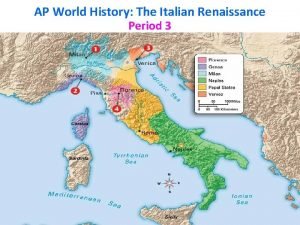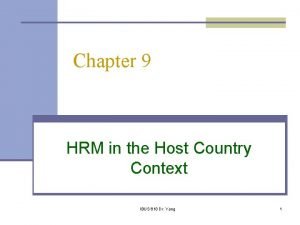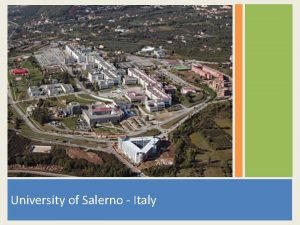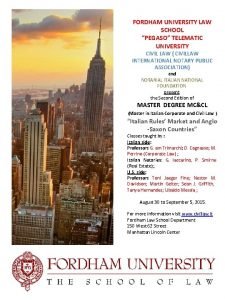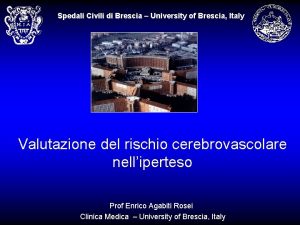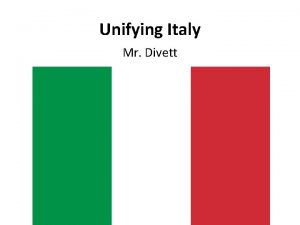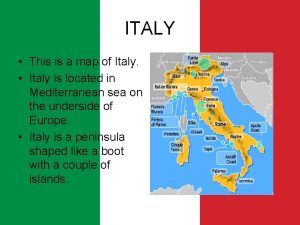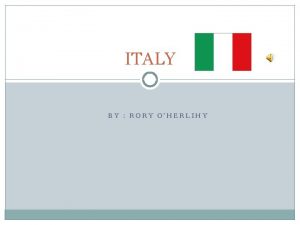University of LAquila City LAquila Country Italy Agenda













- Slides: 13

University of L’Aquila City: L’Aquila Country: Italy

Agenda 1. 2. 3. 4. 5. 6. 7. Credit system used at the institution Alignment (or lack of) with the Bologna Process Use (or lack of) ECTS Administration structure supporting student mobility Student mobility process Credit transfer process Grade conversion process

Credit system used at the institution University of L’Aquila adopted the ECTS credits since the 1999, according to a national law number 509. Our system is based on three main cycles, Bachelor, Master and Ph. D. In details, for the Bachelor degree are fixed 180 ECTS, shared in three academic year. Each academic year foresees 60 credits. The defense of thesis is included in the 60 credits foreseen for the third year; For Master Degree are fixed 120 ECTS, shared in two academic year. For Ph. D the ECTS hasn’t been adopted yet. According to the art. 5 of the above mentioned law, one credit amounts to 25 hours of work.

Alignment (or lack of) with the Bologna Process First cycle – Bachelor’s level, EQF level: 6 180 ECTS credits, 6 semesters, 3 academic years Second cycle – Master’s level, EQF level: 7 120 ECTS credits, 4 semesters, 2 academic years One Tier – Equal to Master’s level, EQF level: 7 (Medicine and Surgery, Dentistry, Architecture Engineering, and others) 12 semesters, 6 academic years or 10 semesters, 5 years, 360 or 300 ECTS credits, Third cycle – Doctorate degree, EQF level: 8 ECTS isn’t used yet. 3 academic years

Use (or lack of) ECTS • Italian HE system adopted the credits only after the experimentation of Erasmus mobility. Thus the government adopted at national level the ECTS system. • For this reason there is no need to translate the national credits in ECTS.

Administration structure supporting student mobility International Relations Office which coordinates and manages the ERASMUS + programme; I. R. O. coordinates and manages students, teachers and staff incoming and outgoing; Departmental Students’ Office which coordinates and manages all the procedures about the recognition of credits, students’ career etc.

Student mobility process – before mobility Usually each January, I. R. O. publishes the contest for the students’ selection procedures. All the students interested must submit all the documents for the participation to the selection to I. R. O. Beneficiaries are selected by each Departmental Erasmus Commission The students selected must contact the host institutions The students incoming to Univaq must send I. R. O. the following documents: - Students application form (personal data) - Learning agreement Must also contact Students’ association “Aquilasmus” which is in charge to help students in finding accommodation, for bank issues, for the first visit to the city and to Department

Student mobility process – after mobility • The student incoming must give back I. R. O. the student record book, where all the data about his/her mobility are reported; • I. R. O. send to the home institution the transcript of records • About Univaq students outgoing, as soon as I. R. O. receive their transcript of records, send them to the Departmental Students Office which is in charge of credits recognition and students careers

Credit transfer process 3 Conditions: Before mobility 1. Bilateral Agreement: previous agreement between the two institutions 2. Learning Agreement: proposed programme of Study abroad, chosen by the student and approved by the two institutions After mobility 1. Transcript of records: certificate attesting the results of the student abroad (within the ECTS) ECTS documentation: The use of ECTS credits is facilitated and quality enhanced by the supporting documents (Course Catalogue, Learning Agreement, Transcript of Records, and Work Placement Certificate). ECTS also contributes to transparency in other documents such as the Diploma Supplement.

Credit transfer process – Before mobility – The Learning Agreements

Credit transfer process – after the mobility – The Transcript of Records

Grade conversion process EGRACONS grade conversion University of L’Aquila, as all the others Italian institutions adopted the 18 -30 Grading scales. Grade 18 it is the lowest, grade 30 it is the highest. Italian grading scale goes from 18 to 30 e lode. The absolute frequency distribution of all grades is shown e. g. 0. 5% of the students of that specific degree course obtain 29. The accumulated frequency distribution starts from 100% for the lowest pass grade up to the top ones

Thank you for your attention! Massimiliano D’Innocenzo University of L’Aquila
 What is the offical name of italy
What is the offical name of italy Which country is called the boot
Which country is called the boot Boot country italy
Boot country italy Renaissance italy city states
Renaissance italy city states Pieta period
Pieta period Agenda sistemica y agenda institucional
Agenda sistemica y agenda institucional Host country and home country
Host country and home country Intra country vs inter country
Intra country vs inter country University of salerno province
University of salerno province Pegaso university italy
Pegaso university italy Brescia university italy
Brescia university italy City and country life vocabulary
City and country life vocabulary City life vs country life
City life vs country life Country life vs city life compare /contrast
Country life vs city life compare /contrast




